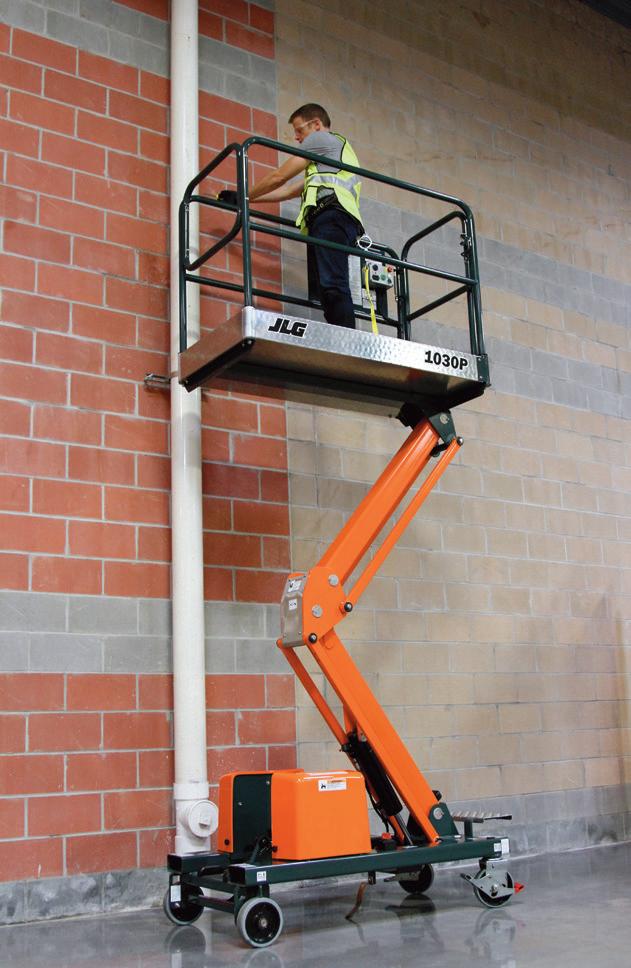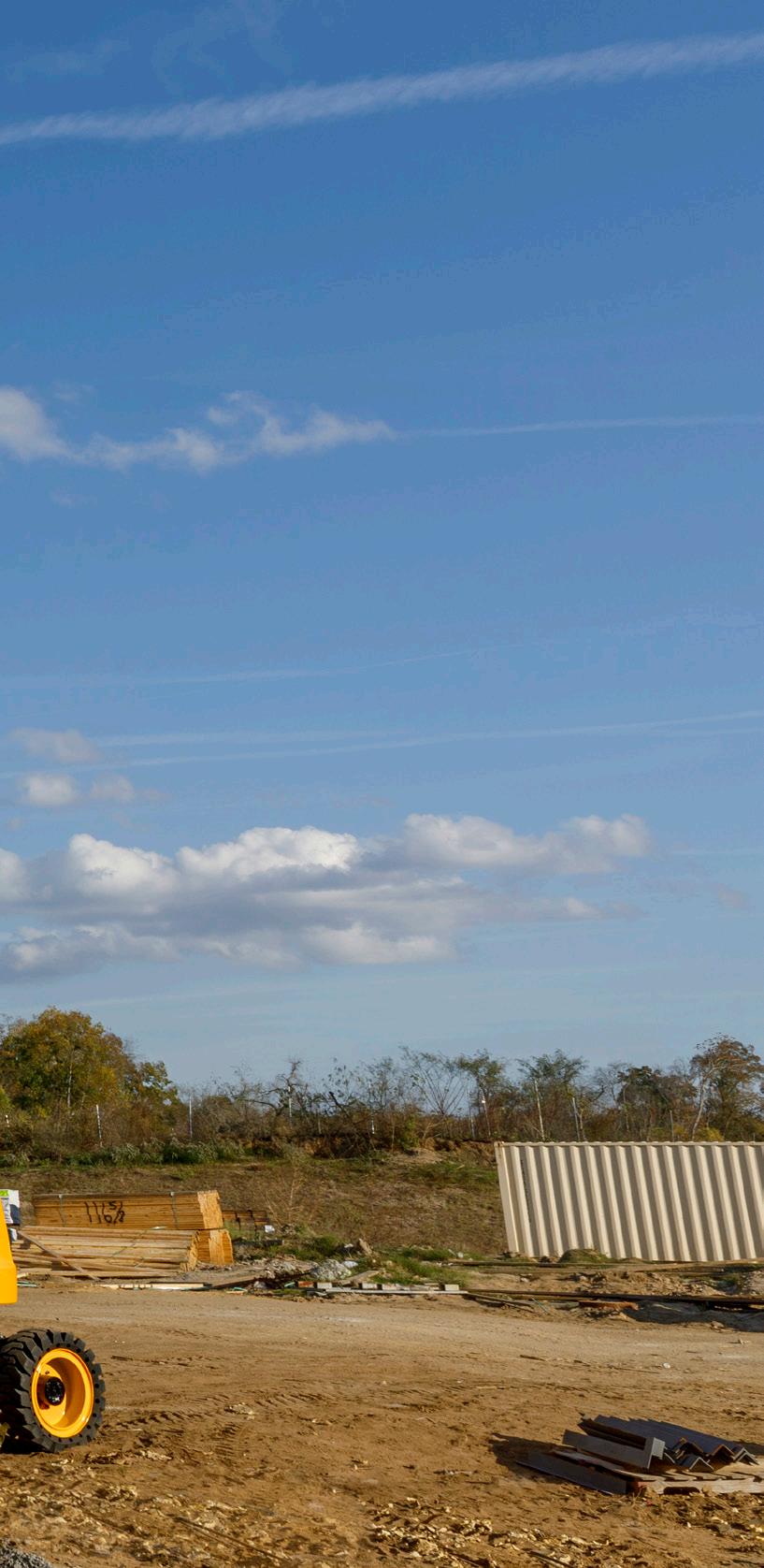
3 minute read
ACHIEVING NEW HEIGHTS
In spite of labor constraints, rising costs and supply chain issues, aerial lift experts agree that the industry is still in good shape and poised to reach new heights.
“Following two years of pandemic-related business disruptions, there is a significant demand for access equipment right now,” says Tim Morris, senior vice president of sales and market development at JLG Industries. “Although the industry continues to work through rising inflation, logistics challenges and high fuel costs, we believe that the numerous megaconstruction projects going on in the U.S. coupled with the momentum we expect from the infrastructure bill make for a very promising future.”
Aerial experts weigh in on trends shaping the industry and provide insight into where the industry is headed.
State Of The Industry
To gain insight into the state of the aerial industry, all one needs to do is look at the state of the construction industry, according to Rebecca Yates, senior product manager at JCB.
“With what goes on with construction, aerial continues to follow,” Yates says. “We’ve gone through COVID, come out of that and everything’s still strong. There’s still a lot of demand.”
Tony Groat, North America regional manager for the International Powered Access Federation (IPAF), agrees.
“The sentiment that the industry is very strong was reinforced at the most recent American Rental Association (ARA) meeting,” Groat says. “If there was a complaint among manufacturers, it was the availability of equipment to fill orders. Despite people saying there’s a recession coming, that’s inconsistent with what I see in that construction is very strong, and industrial accounts are relatively strong.”
Groat adds that additional manufacturers entering the marketplace also signifies growth in the industry.
“Profit is significant enough that new players are penetrating the marketplace because of demand exceeding what’s available in the normal chain of resources,” Groat says.
Top Trends
1. Urbanization
As more of the population moves to urban centers, demand for clean energy and compact equipment has skyrocketed.
“Customers may have resisted these technologies in the past due to cost and complexity, but users and regulations are driving change,” Morris says. “Advances in technology made these solutions more affordable, so adoption has accelerated.”
As part of the urbanization trend, compact lifts have also gained traction in the industry. Groat points to the compact footprint, decreased ground pressure and ability to go as high as 100 feet as part of the appeal.
“That all makes it easier to get into places that were more challenging with conventional equipment,” Groat says.
2. Green initiatives
With the shifts to urbanization and changes in customer attitudes, green initiatives have also taken hold.
“One of the biggest trends right now is electrification, the result of regulations, location requirements and a growing importance on sustainability,” says Simon Meester, president of Genie, a Terex brand. “The capabilities of the technology have evolved rapidly, while costs have come down. Because electrified equipment can offer a lower total cost of ownership (when used correctly), it’s becoming more cost effective to own and operate.”
Groat says electrification can lead to other positive outcomes.
“Fully electric machines mean the elimination of oils and hydraulics and contaminants, meaning safety and environmental issues could be eradicated,” Groat says.
Yates notes that some of the shift in attitude comes from companies implementing requirements on the number of “green” pieces of equipment for a jobsite.
“It’s not just when they put a blue bin in the office to recycle paper,” Yates says. “Rental houses and manufacturers are trying to make sure we’re supporting their customers’ direct needs. That’s another consideration for the rental houses: How do you start molding your fleets and mixing in hybrid and electric equipment to meet those customers’ needs?”
Meester says a challenge comes with bringing the right technology to the right customers at the right time.
“Because not all jobsites and all applications will be able to go full electric at the same time, we need to offer flexible solutions,” Meester says.
3. Products to ease labor constraints
The adage of doing more with less also rings true in the aerial lift industry.

“Look at the wide range of products that’s grown, such as low-level access, a whole new segment,” Groat says. “It’s all because we need to be more efficient. Labor is a huge challenge in every industry. Atrium lifts and lowlevel access and electrification increase productivity in areas these products couldn’t access before.”
Brian Rabe, product marketing manager, Manitou, adds that customers are requesting equipment with versatility and “value add” features.
“Past platform needs were more targeted toward lift height, site obstacles, lift application and capacity, but we’re seeing more needs for improved machine mobility and additional, unrestricted capacity,” Rabe says. “We’re adapting our products to better align with the changing jobsites they see every day.”
Joe Leinwol, chief sales officer of Magni America, says that customers are also requesting equipment that will lift higher and heavier.
“Everybody always thought they had to use cranes, and there was no other option, but people are now seeing you can use telehandler forklifts,” Leinwol says.
4. Safety
Not a new trend, safety continues to be top of mind for aerial equipment operators, according to Gary Weisman, COO of Magni America.

“We incorporate safety in many areas, and we hear from our dealers that this will continue to evolve over a period of years,” Weisman says.
To keep everyone up to date on safety practices, organizations like IPAF update guidelines regarding operators working at height and provide dashboards to enhance accident reporting.










